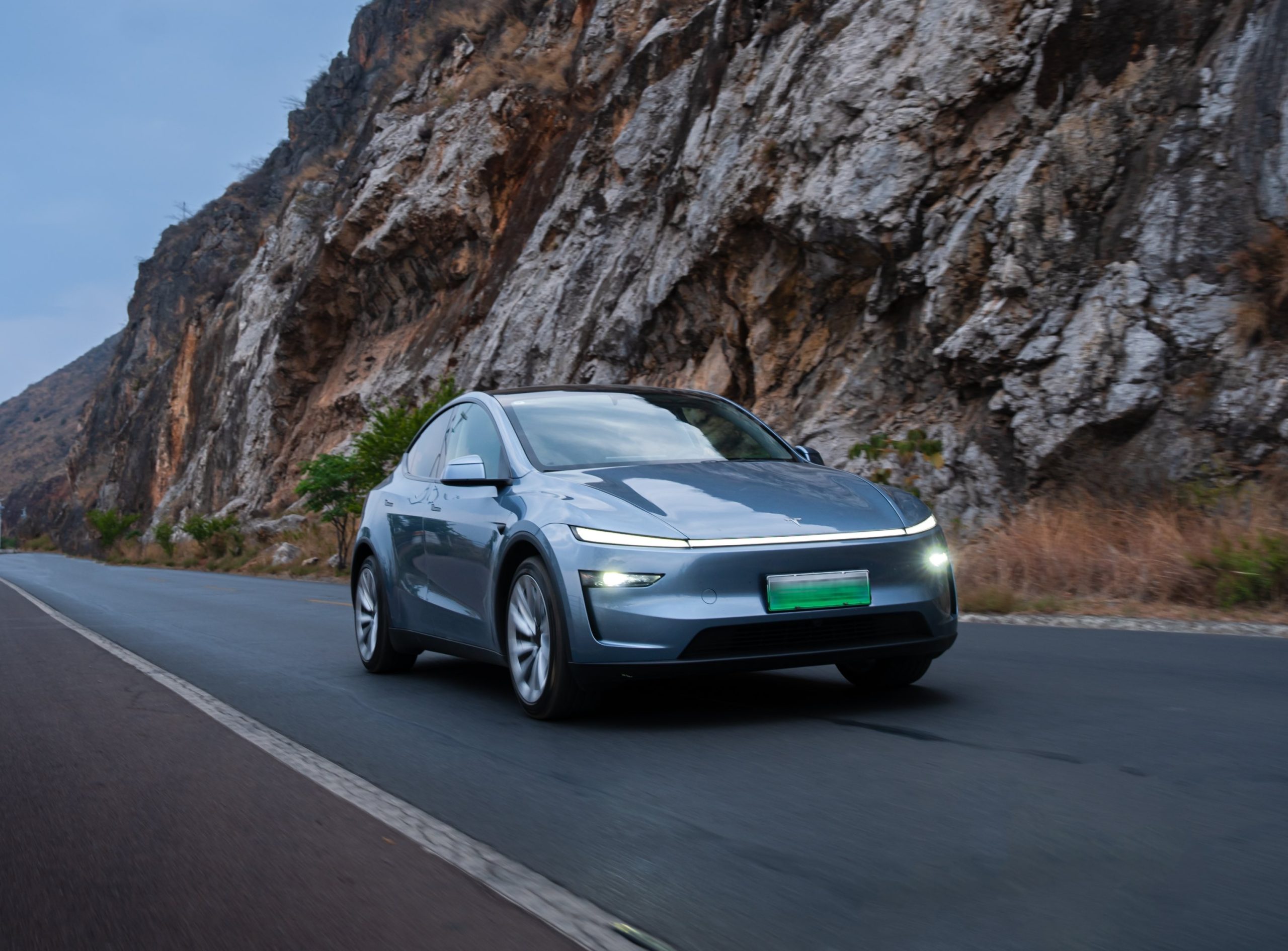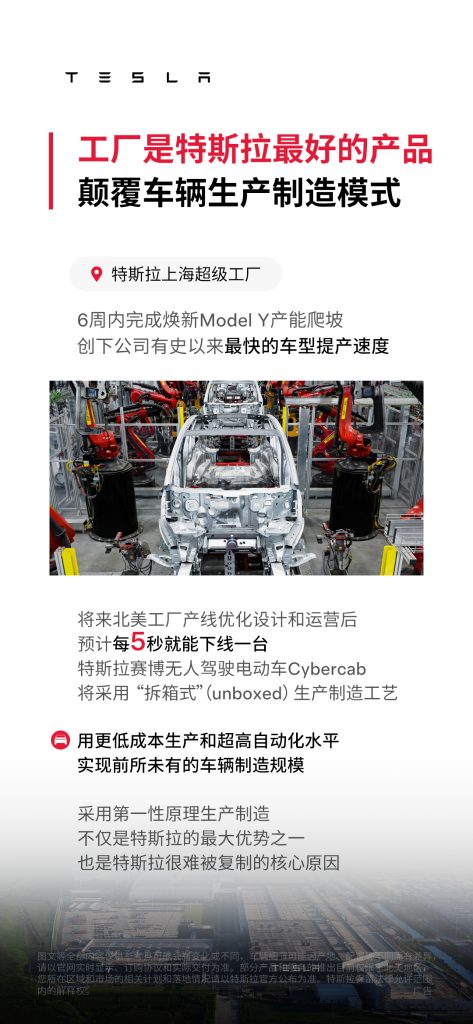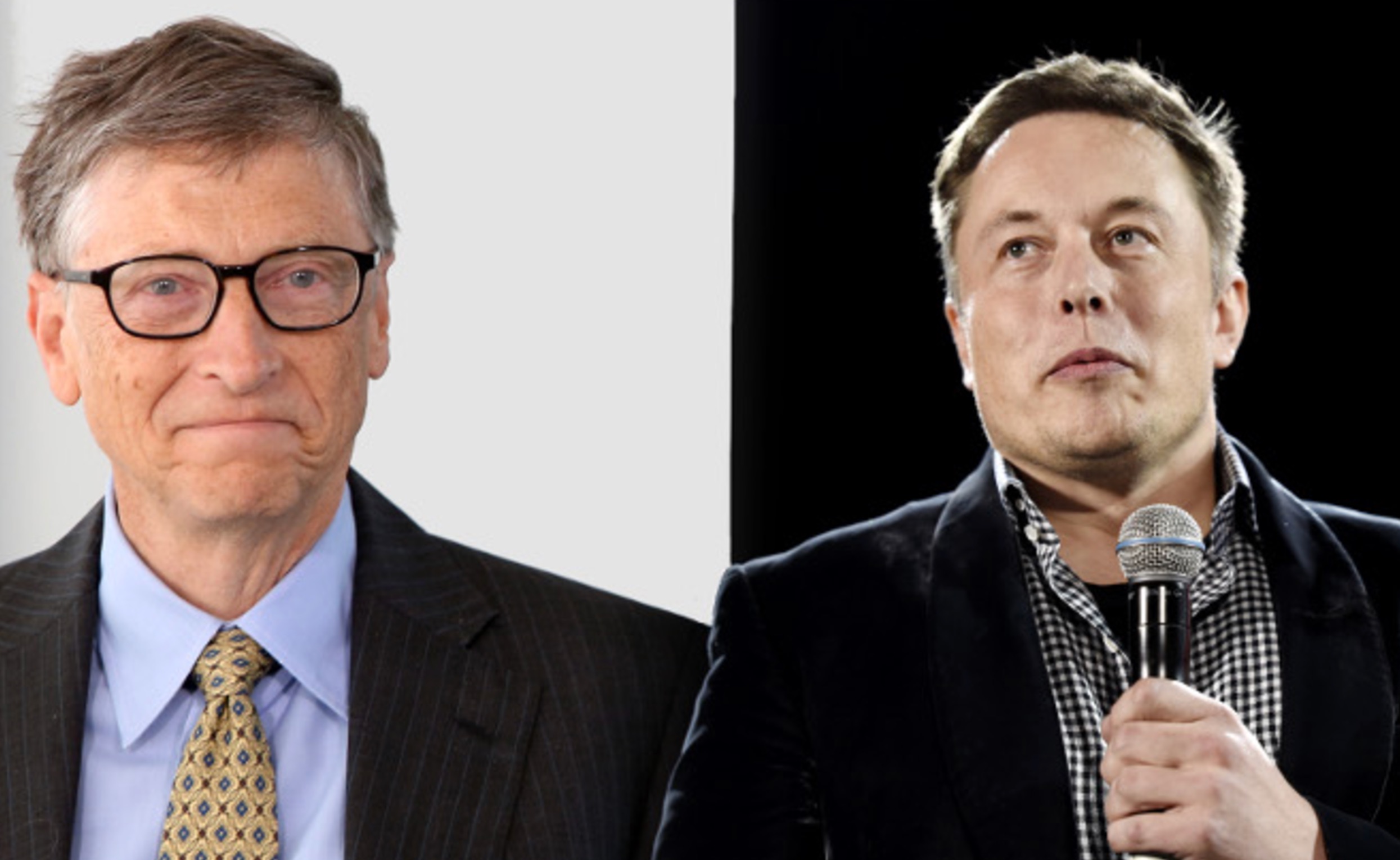Elon Musk
Tesla proves once more that its factories are its best product
Tesla’s factories are the company’s biggest products–literally.

Tesla’s factories are not just the company’s biggest assets. They are also its best product. This is, at least, as per Tesla China’s recent post on social media platform Weibo.
Tesla China’s Weibo post was shared to celebrate Giga Shanghai’s changeover to the new Model Y, which is currently being delivered to consumers globally.
Tesla’s Best Product
In its post, Tesla China noted that Gigafactory Shanghai was able to complete its new Model Y production ramp up in just six weeks. This is a new record for Tesla, and it speaks to the company’s intense focus on efficiency. Tesla also highlighted the Cybercab’s production line in its Weibo post, stating that the upcoming vehicle will see “ultra-high levels of automation” when it gets produced.
“The factory is Tesla’s best product—Tesla Shanghai Super Factory completed the new Model Y production capacity ramp-up within 6 weeks, setting a record for the company’s fastest model production speed. In the future, the North American factory is expected to roll out a Tesla self-driving electric Cybercab every 5 seconds to subvert the vehicle production and manufacturing model. Adhering to the first principle of car manufacturing is Tesla’s core advantage that is difficult to copy,” Tesla China wrote in its post.


Tesla’s Factories
Tesla’s factories are among the best in the world. Tesla only operates four vehicle factories for its entire vehicle lineup today, which is quite impressive for a company that has so far sold up to 1.8 million vehicles per year. Tesla is expected to improve its factories’ output with its future vehicles as well, with Elon Musk stating during the company’s Q1 2025 All-Hands Meeting that the Cybercab’s factory will look more like a high-speed consumer electronics line than a car production line. These innovations, Musk noted, should allow Tesla to ramp the Cybercab’s production to 2 million units per year.
Musk highlighted the importance of Tesla’s factories in the first quarter earnings call as well. While discussing the Cybercab’s line, Musk noted that with Tesla, the factory is as much a product as its cars. “The factory is the product as much as the car is the product. So, this really is the first principles approach to manufacturing that will ultimately allow us, I think, to… achieve a cycle time, meaning a unit every five seconds or less, off a single line,” Musk stated.

Elon Musk
Elon Musk takes latest barb at Bill Gates over Tesla short position
Bill Gates placed a massive short bet against Tesla of ~1% of our total shares, which might have cost him over $10B by now

Elon Musk took his latest barb at former Microsoft CEO Bill Gates over his short position against the company, which the two have had some tensions over for a number of years.
Gates admitted to Musk several years ago through a text message that he still held a short position against his sustainable car and energy company. Ironically, Gates had contacted Musk to explore philanthropic opportunities.
Elon Musk explains Bill Gates beef: He ‘placed a massive bet on Tesla dying’
Musk said he could not take the request seriously, especially as Gates was hoping to make money on the downfall of the one company taking EVs seriously.
The Tesla frontman has continued to take shots at Gates over the years from time to time, but the latest comment came as Musk’s net worth swelled to over $600 billion. He became the first person ever to reach that threshold earlier this week, when Tesla shares increased due to Robotaxi testing without any occupants.
Musk refreshed everyone’s memory with the recent post, stating that if Gates still has his short position against Tesla, he would have lost over $10 billion by now:
Bill Gates placed a massive short bet against Tesla of ~1% of our total shares, which might have cost him over $10B by now
— Elon Musk (@elonmusk) December 17, 2025
Just a month ago, in mid-November, Musk issued his final warning to Gates over the short position, speculating whether the former Microsoft frontman had still held the bet against Tesla.
“If Gates hasn’t fully closed out the crazy short position he has held against Tesla for ~8 years, he had better do so soon,” Musk said. This came in response to The Gates Foundation dumping 65 percent of its Microsoft position.
Tesla CEO Elon Musk sends final warning to Bill Gates over short position
Musk’s involvement in the U.S. government also drew criticism from Gates, as he said that the reductions proposed by DOGE against U.S.A.I.D. were “stunning” and could cause “millions of additional deaths of kids.”
“Gates is a huge liar,” Musk responded.
It is not known whether Gates still holds his Tesla short position.
Elon Musk
Tesla needs to come through on this one Robotaxi metric, analyst says
“We think the key focus from here will be how fast Tesla can scale driverless operations (including if Tesla’s approach to software/hardware allows it to scale significantly faster than competitors, as the company has argued), and on profitability.”

Tesla needs to come through on this one Robotaxi metric, Mark Delaney of Goldman Sachs says.
Tesla is in the process of rolling out its Robotaxi platform to areas outside of Austin and the California Bay Area. It has plans to launch in five additional cities, including Houston, Dallas, Miami, Las Vegas, and Phoenix.
However, the company’s expansion is not what the focus needs to be, according to Delaney. It’s the speed of deployment.
The analyst said:
“We think the key focus from here will be how fast Tesla can scale driverless operations (including if Tesla’s approach to software/hardware allows it to scale significantly faster than competitors, as the company has argued), and on profitability.”
Profitability will come as the Robotaxi fleet expands. Making that money will be dependent on when Tesla can initiate rides in more areas, giving more customers access to the program.
There are some additional things that the company needs to make happen ahead of the major Robotaxi expansion, one of those things is launching driverless rides in Austin, the first city in which it launched the program.
This week, Tesla started testing driverless Robotaxi rides in Austin, as two different Model Y units were spotted with no occupants, a huge step in the company’s plans for the ride-sharing platform.
Tesla Robotaxi goes driverless as Musk confirms Safety Monitor removal testing
CEO Elon Musk has been hoping to remove Safety Monitors from Robotaxis in Austin for several months, first mentioning the plan to have them out by the end of 2025 in September. He confirmed on Sunday that Tesla had officially removed vehicle occupants and started testing truly unsupervised rides.
Although Safety Monitors in Austin have been sitting in the passenger’s seat, they have still had the ability to override things in case of an emergency. After all, the ultimate goal was safety and avoiding any accidents or injuries.
Goldman Sachs reiterated its ‘Neutral’ rating and its $400 price target. Delaney said, “Tesla is making progress with its autonomous technology,” and recent developments make it evident that this is true.
Elon Musk
Tesla CEO Elon Musk shades Waymo: ‘Never really had a chance’

Tesla CEO Elon Musk shaded Waymo in a post on X on Wednesday, stating the company “never really had a chance” and that it “will be obvious in hindsight.”
Tesla and Waymo are the two primary contributors to the self-driving efforts in the United States, with both operating driverless ride-hailing services in the country. Tesla does have a Safety Monitor present in its vehicles in Austin, Texas, and someone in the driver’s seat in its Bay Area operation.
Musk says the Austin operation will be completely void of any Safety Monitors by the end of the year.
🚨 Tesla vs. Waymo Geofence in Austin https://t.co/A6ffPtp5xv pic.twitter.com/mrnL0YNSn4
— TESLARATI (@Teslarati) December 10, 2025
With the two companies being the main members of the driverless movement in the U.S., there is certainly a rivalry. The two have sparred back and forth with their geofences, or service areas, in both Austin and the Bay Area.
While that is a metric for comparison now, ultimately, it will not matter in the coming years, as the two companies will likely operate in a similar fashion.
Waymo has geared its business toward larger cities, and Tesla has said that its self-driving efforts will expand to every single one of its vehicles in any location globally. This is where the true difference between the two lies, along with the fact that Tesla uses its own vehicles, while Waymo has several models in its lineup from different manufacturers.
The two also have different ideas on how to solve self-driving, as Tesla uses a vision-only approach. Waymo relies on several things, including LiDAR, which Musk once called “a fool’s errand.”
This is where Tesla sets itself apart from the competition, and Musk highlighted the company’s position against Waymo.
Jeff Dean, the Chief Scientist for Google DeepMind, said on X:
“I don’t think Tesla has anywhere near the volume of rider-only autonomous miles that Waymo has (96M for Waymo, as of today). The safety data is quite compelling for Waymo, as well.”
Musk replied:
“Waymo never really had a chance against Tesla. This will be obvious in hindsight.”
Waymo never really had a chance against Tesla. This will be obvious in hindsight.
— Elon Musk (@elonmusk) December 10, 2025
Tesla stands to have a much larger fleet of vehicles in the coming years if it chooses to activate Robotaxi services with all passenger vehicles. A simple Over-the-Air update will activate this capability, while Waymo would likely be confined to the vehicles it commissions as Robotaxis.








